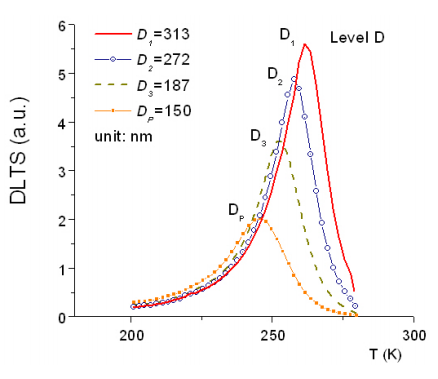This thesis examines grain boundaries, dislocations and metallic impurities in photovoltaic multicrystalline silicon (PV mc-Si). The interaction dynamics between hierarchy of grain boundaries (GBs), nickel, iron, and intragrain defects during thermal and hydrogenation processes have been studied. Localized Deep Level Transient Spectroscopy (DLTS) analysis was applied to quantify the changes induced by rapid thermal annealing (RTA) in trap states and accompanying decrease of carrier recombination in respect to the hierarchy of GBs and the dislocation density. A unique in-situ microscopic masking process for Schottky diode preparation which practically enables the localized probing of specific electrical active defect structure has been developed to investigate the local properties of mc-Si wafers. The reduction of recombination activity at GBs after RTA was found to be dominated by impurity decoration and less influenced by the relative structural mismatch for a specific type of GB. A new type of spectra was observed in PV thin mc-Si and its origins are attributed to the additional barrier height caused by GB hetro-junction.
The gettering capabilities of GBs were found to follow the sigma order in high sigma GB group but no consistent gettering relationship was found between gettering strength and low sigma group (Σ3 and twins). Electron bean induced current (EBIC) result shows that most of dislocation sites and twins (intragrain defects) present a weak or no impurity gettering tendency if they co-exist with GBs. GBs present as a more favored gettering sites to attract impurities under annealing condition. GB gettering strength presents a higher dependence on the hierarchy of crystal defect and lower dependence on the impurity type. GB plane also plays an influential role in the gettering behavior of GBs. On the other hand, the concentration of electrically “inactive” metals due to the presence of structural defect was quantified by subtracting the difference between the bulk metallic impurity concentration and electrical trap concentration. The electrical inactive level of nickel was found a least one order of magnitude higher than iron.
Photovoltaic solar cells are an important contributor to the exploitation of renewable energy. More than 90% of current production uses silicon as the active material in these devices and at the present time about half of this is multi-crystalline material. This type of silicon is considerably cheaper that higher quality single crystal, but its efficiency as a photovoltaic material is lower. The present situation is that continuing improvements in multi-crystalline silicon (mc-Si) solar cell efficiencies has reached a stage where, for further progress, it is essential to understand the underlying materials physics that controls the electrically activity of structural defects, impurities and their mutual interactions.
The performance of crystalline solar cells is generally limited by lattice defects, which reduce the minority carrier lifetime. Dislocations, grain boundaries and intragrain defects, such as certain impurities, small clusters of atoms or precipitates, are mainly responsible for the recombination processes. Particularly localized regions of high dislocation densities are known to be rather detrimental. 2 Dislocations and grain boundaries play an important dynamic role in the determination of electrical properties because of their gettering and storage capacity for certain mobile metallic impurities. If dissolved in the lattice, most of the metal impurities are very recombination active. Because of the high mobility down to lower temperatures, they can accumulate at the core of extended defects, which is energetically more favorable. In the bound state, the impurities are, in general, less recombination active.

Fig1
These effort discussed in the previous paragraph verified that the oxidation- induced dislocations are better correlated with shallow trap E with EV + 0.10 eV and misfit dislocations can be attributed to trap B. This further provides the explanation on the higher amplitude of trap B in HOB-2 than it is in HOB. The second oxidation at elevated temperatures caused further dislocation reactions including glide and climb processes so that the concentration of dislocations in twice-oxidation sample HOB-2 is higher than one time oxidation sample HOB.
上一篇: DDMAF化学辅助抛光单晶硅
下一篇: 光刻胶溶解的原位表征